Table of contents
Fresh basil ( Ocimum basilicum) is mainly used raw as a conventional or organic spice in the kitchen.
Using basil in the kitchen:
Basil is a popular, aromatic and fresh herb in Italian cuisine. The herb is an essential part of Mediterranean dishes and traditionally enriches dishes such as pizzas, green pestos or recipes with tomatoes (e.g. tomato salad, fresh tomato sauce, bruschetta, tomato pesto, etc.).
Do you use basil raw or cooked? Fresh basil leaves are mostly added to dishes after cooking to preserve the heat-sensitive aroma. In contrast to dried basil, fresh basil leaves taste more aromatic.
Basil, sometimes referred to as German pepper, has an aromatic, peppery aroma that helps save on salt and goes well with rosemary and sage. The leaves are used as an appetizing and digestive green for fatty, hearty dishes or pulses (e.g. cannellini beans). To preserve the freshness and color of the leaves, you should wash basil just before use and then shake it dry.
The tender, delicate leaves and shoots of the so-called royal herb add a touch of flavor to salads, raw vegetables, tomato dishes, sauces and vegetable soups (soup basil). Finely chopped, fresh basil leaves go well in minced herb mixtures to season patties, with vegetables, spinach, risottos or in vegetable fillings. Wild herb salt, herb oil, herb vinegar, pesto, dry spice mixtures or vegan herb butter get a spicy note from basil (brown basil, basil herb).
To preserve fresh basil, you can pickle the leaves in oil or salt them in layers in a dark screw-top jar and pour oil over them. The pickled leaves will keep for about four weeks and provide a fine Mediterranean flavor from the jar.
To make herbal vinegar or herbal oil, put washed and dabbed dry basil into bottles and pour wine vinegar or a long-lasting oil ( rapeseed oil, olive oil) over it. Use 100 g of basil or herb combinations per litre of vinegar or oil. Suitable herbs are tarragon, thyme, dill, lemon balm, peppermint, rosemary or hyssop.
Can you eat basil seeds raw? Swollen, raw basil seeds are used in the kitchen in a similar way to Mexican chia seeds. Organic basil seeds can be germinated as a raw food snack.
To freshen your breath, you can eat basil leaves raw from time to time.
Vegan recipe for green pesto with fresh basil:
Ingredients (for four people): 100 g basil, fresh (organic); 2 garlic cloves, raw and peeled; 50 g walnuts ; 130 + 20 ml cold-pressed rapeseed oil or walnut oil ; a pinch of table salt; a pinchof pepper.
Preparation: Puree raw basil (fresh), garlic, walnuts and most of the oil in a blender until you get the desired consistency. Season the pesto with salt and pepper, put it in a clean jar and cover it with the remaining oil. It will keep in the fridge for up to three weeks. The vegan recipe "Pesto alla Genovese" can also be prepared with less oil and goes well with pasta, bread, crostini, bruschetta or soups. Rapeseed oil or walnut oil are healthier alternatives to the olive oil that is otherwise traditionally used.
Recipe for tea with basil (fresh):
To make tea with fresh or dried basil (basil herb), use 1-2 heaped teaspoons of crushed green leaves to 250 ml of boiling drinking water. After letting it brew for 10-15 minutes, strain the herb and drink the fresh basil tea unsweetened. 1
For a curative treatment of the stomach and intestines (especially for chronic flatulence), drink a cup of basil tea twice a day. After 8 days, take a break of 14 days and continue the treatment for another eight days. 1
Vegan recipes with basil can be found under the note: " Recipes that have the most of this ingredient ".
| Not only vegans or vegetarians should read this: Vegans often eat unhealthily. Avoidable nutritional errors. |
Shopping - where to buy basil?
Basil can be bought as a dried, shredded or raw spice - often also as a fresh potted plant - at popular supermarket chains such as Coop, Migros, Denner, Volg, Spar, Aldi, Lidl, Rewe, Edeka or Hofer as well as in organic supermarkets such as Denn's Biomarkt or Alnatura. Good addresses for regional and controlled organic quality (organic) are organic shops, health food stores, weekly markets, farms or subscription boxes (green boxes, seasonal boxes). Basil spice is also available in raw food quality (raw quality), gently dried at a maximum of 40 °C.
Basil seeds and basil oil can be ordered online or purchased from specialist retailers, including organic products.
Season: Fresh basil from the garden or outdoors is in season from June to September. Basil from the greenhouse can be bought in bunches or as a potted plant all year round.
Found in the wild:
Basil profile: Basil is an annual herbaceous and bushy plant, growing to around 50 cm in height. The egg-shaped, entire or slightly toothed leaves have long stalks. The flowers of the axillary umbels are white, pink or purple. Basil is found in gardens and cultivated plants north of the Alps. Wild plants are rarely found there. 1
Storage:
Dried basil should be stored in glass or metal containers, protected from light and moisture. Plastic containers are unsuitable as they have a negative effect on the essential oil. 2
Fresh bunches of vegetables are placed in the refrigerator, including the leaf stalks, in a freshness box lined with damp kitchen paper. This will preserve the aroma for a few days. 3
Can you freeze raw basil? Fresh basil loses a lot of its flavor when dried. A good way to preserve it is to freeze it. To do this, chop the raw basil leaves into small pieces and freeze them, spread out on a tray. Later, fill the frozen herbs into freezer bags or containers. Alternatively, chopped basil leaves can be frozen as herb ice cubes. 4
Ingredients - Calories - Nutritional values (basil, fresh):
Per 100 g, fresh basil contains 23 kcal, 2.6 g carbohydrates, 3.2 g proteins and 0.64 g fat. 5.6
The essential oil content varies between 0.04 and 0.7%, depending on the origin and time of harvest. According to the German Drug Codex ( DAC), basil used medicinally must contain at least 0.4% essential oil. The main components are linalool, methyl chavicol (estragole) and methyl cinnamate. 2
In DAC, the linalool basil type with 50-70% linalool is used medicinally as the main component. Other components of the linalool type are 10-30% eugenol, 5-20% 1,8-cineole and (only) 2-10 percent methyl chavicol (estragole). For comparison: the essential oil of the estragole type contains 80-90% (potentially harmful) methyl chavicol. 2
The medicinally used basil drug contains about 5% polyphenols in the form of Lamiaceae tannins (rosmarinic acid, caffeic acid) and flavonoids (quercetin, kaempferol glycosides) as well as sitosterol (phytosterol), ursolic acid, amyrin and aesculoside. 2
With 415 µg/100g, raw basil contains 5.5 times the daily requirement of vitamin K. Comparable amounts in raw foods can be found in 100 g of raw nettles (499 µg), raw spinach (483 µg) or fresh parsley (454 µg). Raw chard (830 µg), fresh dandelion leaves (778 µg) and raw kale (705 µg) have significantly higher contents. 5,6
The complete ingredients of fresh basil, the coverage of the daily requirement and comparison values with other ingredients can be found in our nutrient tables in CLICK FOR below the ingredients picture.
Basil - Health aspects - Effects:
Is fresh basil healthy? (incorrect spelling: fresh basil) According to " Wichtl -Teedrogen und Phytopharmaka " (2016), no (sufficiently) confirmed effects have been proven for basil. 2 Recent studies indicate antioxidant, antibacterial, antifungal and anticarcinogenic effects. Laboratory procedures have been able to demonstrate some of these effects on pathogens and (human) cancer cell lines. Essential oils from basil could be promising for the food, medicine and cosmetics industries. There are a few clinical studies available. 7,8,9 Scientific reviews confirm the strong antioxidant capacities of O. tenuiflorum, i.e. Indian basil (see below under "Possibility of confusion"). 8
Dangers - Intolerances - Side effects:
Estragole proved to be mutagenic (liver tumors) in animal studies. The animals were given the pure substance for twelve months. The results are to be regarded as indications and cannot be transferred to basil herb. 2
The Federal Institute for Risk Assessment ( BfR) expressly points out that it is not necessary to avoid basil. Occasional use in the kitchen is acceptable as long as it is not used on a permanent basis. Estragole and methyleugenol are found in other plants such as tarragon, star anise, allspice, nutmeg, lemongrass and fennel. 10,11
A more recent review (scientific review) from 2018 concludes that basil is safe for consumption in food from a toxicological point of view. The plant's own flavonoid nevadensin counteracts the carcinogenic potential. However, it is appropriate to set a maximum level for estragole and methyl chavicol in essential basil oils. 7
In principle, the estragole problem would be more serious if the estragole type was available on the market rather than the linalool type described in the DAC. Although the estragole type does not pose an acute health risk, medicinal use should be avoided for safety reasons. 2
Use as a medicinal plant:
HMPC ( Committee on Herbal Medicinal Products) and ESCOP ( European Federation of National Societies for Phytotherapy) have not yet examined basil. Commission E wrote a negative monograph because of insufficiently documented effects and possible risks. 2
Folk medicine - natural medicine:
In Mediterranean countries, basil (Krampfkräutl, Joseph's herb) is used for loss of appetite (as a stomachic), for flatulence and a feeling of fullness (as a carminative), occasionally to increase urine production (as a diuretic), to promote milk production (as a lactagogue, for lactation, incorrect spelling: lactaction) and externally as a gargle and astringent for inflammation of the throat. 2 In traditional medicine, basil is used for women's problems, migraines and rarely for diseases of the urinary organs. 1,12
As a home remedy, alcoholic extracts of basil are used in ointments and compresses to treat slow-healing or festering wounds. Freshly crushed leaves can be applied to insect bites. 1,2,12
Occurrence - Origin:
The home of basil is not known for sure. It is believed to have originally been found in India or tropical and subtropical Asia. From there, the spice spread widely. Today, basil is cultivated in the subtropics, especially in the entire Mediterranean region, in various breeds and varieties. 1,2
Growing in the garden or as a potted plant:
Eating fresh basil is a good goal: From mid-May, basil can be sown in a sunny and sheltered location with a row spacing of 20 to 30 cm. Basil needs nutrient-rich, humus-rich and loose soil with a pH value of 6.5-7.5. As a light-germinating plant, the basil seeds are only lightly covered with soil. The germination time is around ten to 14 days. Stagnant water prevents the cold-sensitive plant from being damaged. 1,13
After about 6-8 weeks, the first basil leaves can be harvested. It is advantageous to harvest whole shoots with a length of 5-7 cm instead of individual leaves. By continuously cutting off the shoot tips, you avoid flowering and thus the development of bitter flavors. 13 Information on the basil profile can be found above under "Finding wild".
Basil can be grown in beds with tomatoes, grapes, peppers, beans, kohlrabi, corn and onions, whereby basil repels pests and fungal spores. Herbs such as dill, lemon balm, savory or thyme should not be planted in the immediate vicinity of basil. 13
As a potted plant, basil is grown indoors, on the windowsill or balcony. In spring, the potted plant can be placed outside during the day and, as soon as the temperature no longer drops below 12 °C, also overnight. 13
What care do potted basil plants need? It is important to have a sunny, wind-protected spot on the windowsill or balcony and to water them daily with small amounts of water so that waterlogging does not occur. The protective film provides the plant with a protected micro-atmosphere. Ideally, you should not remove it completely straight away, but cut it back little by little over several days. 3
Should you repot / divide basil? The potted plants, which are usually densely seeded, can be divided into several pieces for better growth and placed in a larger pot with potting soil and mineral fertilizer (or coffee grounds). Basil benefits from a regular harvest. 3
Animal protection - species protection - animal welfare:
Ocimum basilicum 'Magic Blue', a basil hybrid, is a popular bee pasture and insect plant. The so-called bush basil grows bushy and reaches a height of up to one meter.
Possibility of confusion:
We are not aware of any confusion between basil and poisonous plants. It is possible that the numerous basil species and varieties cannot always be clearly identified. There is a possibility of confusion with Indian basil ( Ocimum tenuiflorum syn. Ocimum sanctum, Tulsi, Holy Basil) or Thai basil, whereby the first-mentioned Ocimum species is often also called Thai basil (at least the Holy Basil used in Thai cuisine = Kaprao).
General information:
Basil ( Ocimum basilicum) is a spice plant from the genus Basil ( Ocimum) in the family Lamiaceae.
The various types of basil differ in size, leaf shape, leaf color and fragrance. Commonly grown varieties are 'Big Green', 'Genovese' and 'Opal' (red-leaved). Basil can be eaten fresh as a spice, including the variants of Thai basil.
Alternative names:
German alternative names for basil are brown basil, German pepper, cramp basil, soup basil, basil herb, basil, basilicum, Joseph's herb and royal herb (the species epithet basilicum comes from the Greek word for royal).
English names are Sweet Basil, Garden Basil or Basil, fresh.
Medicinal drug: In Latin, basil herb is called Basilici herba (syn. Herba Basilici, Herba Ocimi) and essential basil oil is called Basilici aetheroleum (syn. Oleum Basilici).
Literature - Sources:
Bibliography - 13 Sources
| 1. | Pahlow M. Das grosse Buch der Heilpflanzen. Gesund durch die Heilkräfte der Natur. Hamburg: Nikol Verlagsgesellschaft mbH & Co. KG; 8. Auflage. 2019. |
| 2. | Blaschek W. (Herausgeber). Wichtl –Teedrogen und Phytopharmaka. Ein Handbuch für die Praxis. Stuttgart: Wissenschaftliche Verlagsgesellschaft mbH; 6. Auflage. 2016. |
| 3. | Bzfe.de Schneiden statt zupfen. 2019. |
| 4. | Ugb.de Kräuter trocknen. Sommerliche Vielfalt aufbewahren. Von Irmela Erckenbrecht. |
| 5. | USDA Nährstofftabellen. |
| 6. | diet-health.info Nährstofftabellen. |
| 7. | Sestili P, Ismail T, Calcabrini C, et al. The potential effects of Ocimum basilicum on health: a review of pharmacological and toxicological studies. Expert Opin Drug Metab Toxicol. 2018;14(7):679-692. |
| 8. | Avetisyan A, Markosian A, Petrosyan M, et al. Chemical composition and some biological activities of the essential oils from basil Ocimum different cultivars. BMC Complement Altern Med. 2017;17(1):60. |
| 9. | Rezzoug M, Bakchiche B, Gherib A, et al. Chemical composition and bioactivity of essential oils and ethanolic extracts of Ocimum basilicum L. and Thymus algeriensis Boiss. & Reut. from the algerian saharan atlas. BMC Complement Altern Med. 2019;19(1):146. |
| 10. | Ugb.de UGB-Stellungnahme. Überzogene Warnung vor Fencheltee. 2002. |
| 11. | Bfr.bund.de Estragol- und Methyleugenolgehalte in Lebensmitteln verringern. 2002. |
| 12. | Fleischhauer SG, Guthmann J, Spiegelberger R. Enzyklopädie. Essbare Wildpflanzen. 2000 Pflanzen Mitteleuropas. Aarau: AT Verlag; 1. Auflage. 2013. |
| 13. | Gartenjournal.net Worauf kommt es beim Pflanzen von Basilikum wirklich an? Von Paula Jansen. |

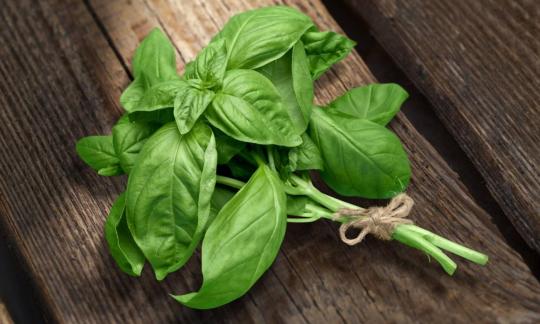

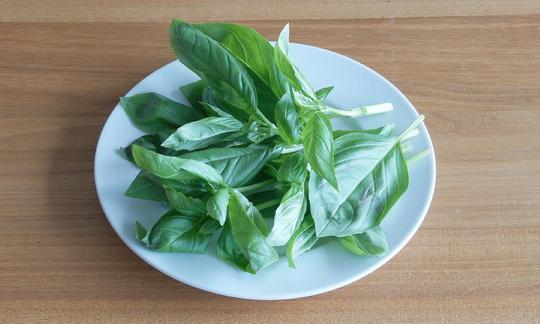

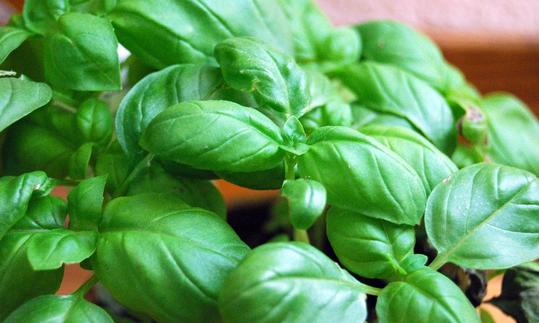

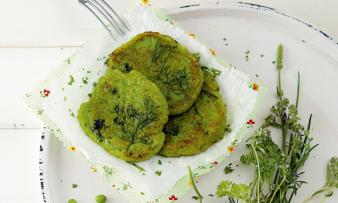
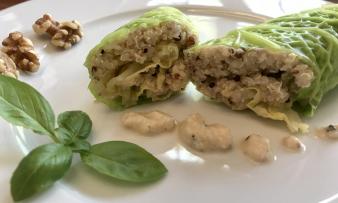
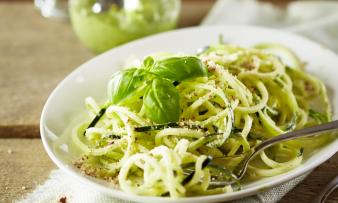





Comments